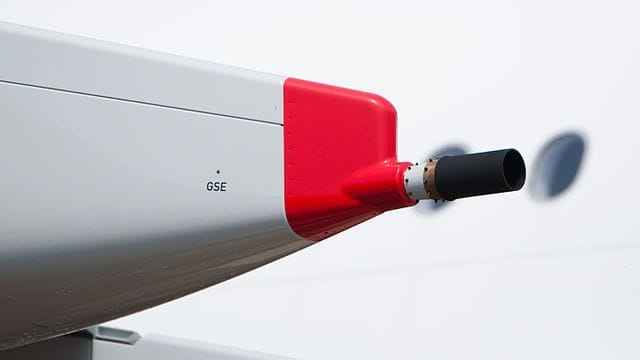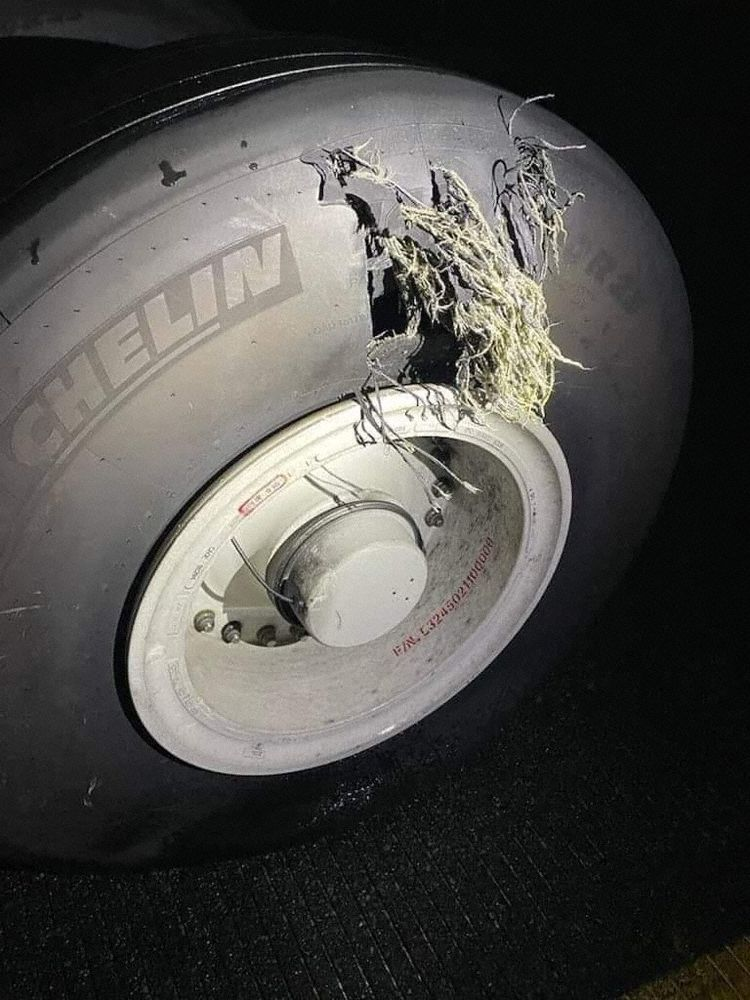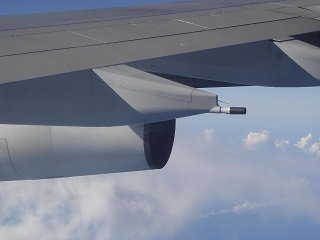EMIRATES A380 BNE
The prefix “Super “ is added to the ATC callsign to alert them to the wake turbulence etc for separation. ie as in “Heavy” for smaller Widebodies.
The A380 defiantly has fuel dump, at least the BA hulls do. A relative has used it!.
The A380 defiantly has fuel dump, at least the BA hulls do. A relative has used it!.
The A380 is classed as a Wake Turbulence Category J by ICAO, with the recommendation that on initial contact with ATC the callsign be suffixed with "Super" (cf "Heavy").
I don't think the OP actually said no fuel dump (defiant or otherwise  ), but rather that you can't necessarily dump enough fuel to get below MLW and so may still have to burn some off if that's the aim.
), but rather that you can't necessarily dump enough fuel to get below MLW and so may still have to burn some off if that's the aim.

No fuel dump on A380 ?
Don't believe.
Don't believe.
 ), but rather that you can't necessarily dump enough fuel to get below MLW and so may still have to burn some off if that's the aim.
), but rather that you can't necessarily dump enough fuel to get below MLW and so may still have to burn some off if that's the aim.
Join Date: Oct 2002
Location: aaa
Posts: 266
Likes: 0
Received 0 Likes
on
0 Posts
Is it just me... or is the panel blown outwards?
How would a tyre blowing on Takeoff and subsequent debris cause the panel to deform outwards, given that area is unpressurised?
Or is that where the gear bay is & a weakened tyre exploded after retraction
Or is it just an optical illusion and its not blown outwards at all 😅
As for electing to continue the flight, I can imagine exactly how they reached that conclusion.
Received low tyre pressure warning, probably info from the crew about a bang/loud noise.
No other abnormal indications or vibrations etc.
Noise put down to blown tyre, everything operating normally, why not continue...
Tell ATC and ask if any debris found on rwy, tell company and ask if they're happy for you to continue with regards to maint & operational considerations on landing
How would a tyre blowing on Takeoff and subsequent debris cause the panel to deform outwards, given that area is unpressurised?
Or is that where the gear bay is & a weakened tyre exploded after retraction
Or is it just an optical illusion and its not blown outwards at all 😅
As for electing to continue the flight, I can imagine exactly how they reached that conclusion.
Received low tyre pressure warning, probably info from the crew about a bang/loud noise.
No other abnormal indications or vibrations etc.
Noise put down to blown tyre, everything operating normally, why not continue...
Tell ATC and ask if any debris found on rwy, tell company and ask if they're happy for you to continue with regards to maint & operational considerations on landing
Join Date: Jan 2007
Location: Weston Super Mare/UAE
Age: 60
Posts: 406
Received 0 Likes
on
0 Posts
There is fuel dump on the 380 and you can often be left still overweight following fuel jettison, as you can jettison everything except what is in the feed tanks (which could be a combined 80t or so. Thus, depending on the ZFW, you can easily be over MLW following a dump). Average dump rate about 2.5t per minute. Can land overweight in a non-normal situation though.
Join Date: Jul 2000
Location: Dubai - sand land.
Age: 55
Posts: 2,832
Received 0 Likes
on
0 Posts
Yes, you can dump fuel from the A380; except from the Feed Tanks as another poster alluded to!
You can also land at up to 60 tonnes over MLW and as long as the landing is within certain parameters such as touchdown wings level and at less than 320 fpm the overweight landing inspection can be deferred. 60 tonnes over MLW by the way is 455 tonnes for the ULR aircraft in the fleet.
If really necessary you can land at up to MTOW of 575 tonnes; but you won’t be going anywhere until the engineers have given it a good going over!
If you took off with 200 tonnes of good old Jet A1 for DXB to BNE it’ll take about 50 minutes to dump all the fuel not in the Feed Tanks so the 8 hours mentioned by PoppaJo is really a very wild number! I’ll not comment about the 737 procedures; I promise😬
You can also land at up to 60 tonnes over MLW and as long as the landing is within certain parameters such as touchdown wings level and at less than 320 fpm the overweight landing inspection can be deferred. 60 tonnes over MLW by the way is 455 tonnes for the ULR aircraft in the fleet.
If really necessary you can land at up to MTOW of 575 tonnes; but you won’t be going anywhere until the engineers have given it a good going over!
If you took off with 200 tonnes of good old Jet A1 for DXB to BNE it’ll take about 50 minutes to dump all the fuel not in the Feed Tanks so the 8 hours mentioned by PoppaJo is really a very wild number! I’ll not comment about the 737 procedures; I promise😬
However I would expect many to consult engineering whilst in a hold and conduct a overweight landing which as above is still safe, vs holding for such a timeframe. Well, as safe as the docs say, outcomes are always a different story.
There is plenty of amateur "analysis" in the comment section, of course.
About the NLG bolt, the tow after landing was quite long, could it have been damaged then?
Only half a speed-brake
On the topic of fuel dump
to avoid future confusion based on correct but partial explanation.
Dumping capacity is a necessary evil from engineering and design perspective. As such is preferably not installed unless required by performance considerations, namely
- approach climb gradient for G/A following an immediate turn back at MTOW.
There is no regulatory requirement to reduce down to MLW, a nice Boeing Aero article (T7) explains: overweight is always possible up to MTOW from the LDR / loading point of view. The only concern is the crew needs to find a legal reason to do so. Basically, anything except ops normal is OK.
Neither of the above opposes the prudent decision to reduce and increase margins before attempting to land with a compromised gear.
you can't necessarily dump enough fuel to get below MLW and so
Dumping capacity is a necessary evil from engineering and design perspective. As such is preferably not installed unless required by performance considerations, namely
- approach climb gradient for G/A following an immediate turn back at MTOW.
There is no regulatory requirement to reduce down to MLW, a nice Boeing Aero article (T7) explains: overweight is always possible up to MTOW from the LDR / loading point of view. The only concern is the crew needs to find a legal reason to do so. Basically, anything except ops normal is OK.
Neither of the above opposes the prudent decision to reduce and increase margins before attempting to land with a compromised gear.
Interestingly the Wheel nearest the hole is all bright and shiny (compared to the others) as if it had just been replaced/fitted? Or is that just a result of being air-blasted for many hours?
Has anyone confirmed the claim from the AvHerald comments section that the "missing bolt photo" was indeed from 2017 and is unrelated to the tyre blowout?
Join Date: Dec 2019
Location: OnScreen
Posts: 415
Likes: 0
Received 0 Likes
on
0 Posts
The picture also seems to show more sidewall damage, though, of course, you can't see from the picture, whether that's collateral damage from the landing or additional damage, originally there, just like the pre-blowout damage.
Could it be, this signals more towards damage caused during storage/mounting of the tire and less towards an operational damaging ?
Join Date: Jan 2015
Location: Usually firmly on the ground
Posts: 146
Likes: 0
Received 3 Likes
on
2 Posts
Fuel dump - what about A340s?
On the topic of fuel dump to avoid future confusion based on correct but partial explanation.
Dumping capacity is a necessary evil from engineering and design perspective. As such is preferably not installed unless required by performance considerations, namely
- approach climb gradient for G/A following an immediate turn back at MTOW.
There is no regulatory requirement to reduce down to MLW, a nice Boeing Aero article (T7) explains: overweight is always possible up to MTOW from the LDR / loading point of view. The only concern is the crew needs to find a legal reason to do so. Basically, anything except ops normal is OK.
Neither of the above opposes the prudent decision to reduce and increase margins before attempting to land with a compromised gear.
Dumping capacity is a necessary evil from engineering and design perspective. As such is preferably not installed unless required by performance considerations, namely
- approach climb gradient for G/A following an immediate turn back at MTOW.
There is no regulatory requirement to reduce down to MLW, a nice Boeing Aero article (T7) explains: overweight is always possible up to MTOW from the LDR / loading point of view. The only concern is the crew needs to find a legal reason to do so. Basically, anything except ops normal is OK.
Neither of the above opposes the prudent decision to reduce and increase margins before attempting to land with a compromised gear.
Does his explanation make sense? Did A340s of that vintage have fuel dumping capacity and would the presence of an urban area make any difference to whether fuel was dumped in this scenario, or was it more a case of wanting to be on the ground in a big hurry and being too busy to bother?
KiloB,
"Interestingly the Wheel nearest the hole is all bright and shiny (compared to the others) as if it had just been replaced/fitted? Or is that just a result of being air-blasted for many hours?"
Looking at the all the reflections on the ramp in the photos/video it would suggest it was raining in BNE.
McHale.
"Interestingly the Wheel nearest the hole is all bright and shiny (compared to the others) as if it had just been replaced/fitted? Or is that just a result of being air-blasted for many hours?"
Looking at the all the reflections on the ramp in the photos/video it would suggest it was raining in BNE.
McHale.





